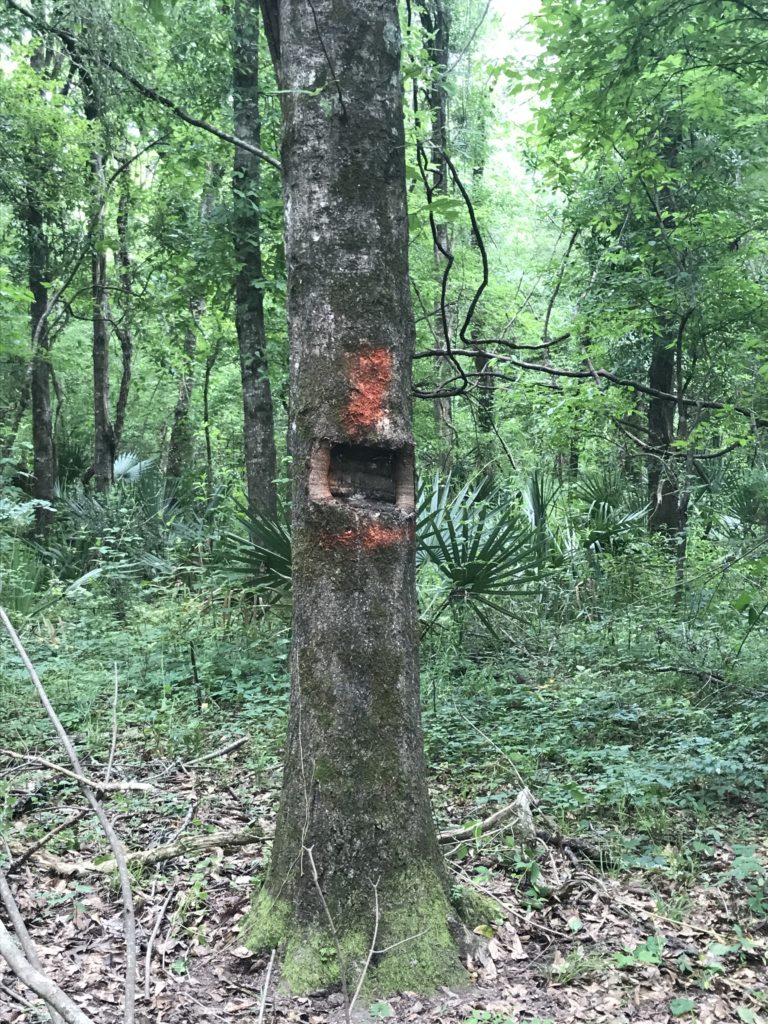Wildlife Forestry in Bottomland Hardwood Forests
Written by Dakota Wagner
Editor’s Note: This project managed and enhanced natural stands of bottomland hardwood forests in the Lower Mississippi Alluvial Valley of Arkansas, Mississippi, and Louisiana for the benefit of wildlife species and freshwater systems. The Guild and partners performed strategic and targeted outreach to 3,073 private forest landowners and practitioners, engaged 218 forest landowners and natural resource professionals through workshops and trainings, prepared forest management plans for 16 high-priority private landowners, and implemented enhancement activities on 1,109 acres of private lands and 300 acres of state lands. We thank our project partners LDWF, The Nature Conservancy’s Lower MS River Program, and Enviva Biomass for their involvement and support.

Checking out Grassy Lake WMA
What is “Guild-style” forestry? To me, it includes the tenets of ecological forestry with an added personal flair. Those who practice Guild-style forestry are curious, not afraid to try new things, and think on the ecosystem level. In my work with the Guild, I have come to learn another term for this type of practice: wildlife forestry.
In November 2019, Duck Locascio spoke at a Learning Exchange in Baton Rouge, LA hosted by the Guild and the Louisiana Department of Wildlife and Fisheries (LDWF). He is a forestry program manager for LDWF and is one of the many advocates for wildlife forestry in the region. He described the practice as “managing forestland to improve wildlife habitat, as well as overall forest health, while improving timber stand conditions, providing for forest regeneration, and producing forest products in an ever-changing environment.”
I must admit though, that the definition didn’t sink in until I got to see it for myself this past May.
Since 2019, LDWF and the Guild have been partners on a National Fish and Wildlife funded project focused on promoting wildlife forestry practices in bottomland hardwood forests of the Lower Mississippi Alluvial Valley. As a part of the program, LDWF created two demonstration areas at Grassy Lake Wildlife Management Area (WMA) and Elbow Slough WMA exemplifying wildlife forestry concepts. The outcome of this work was to showcase wildlife forestry in bottomland hardwood forests through promoting desired tree species, increased forest structural diversity, increased tree-age class diversity, increased biodiversity, increased habitat for at-risk wildlife species, and increased overall forest health and resiliency.
The demonstration sites were harvested in 2020, but the Covid-19 pandemic made it difficult to travel from my home office in North Carolina to Louisiana until May 2023. During the WMA tour with LDWF, I was joined by Guild member Jeff Denman and two students from the Mississippi State University Guild Student Chapter – a mini Guild Gathering.

Intentional cavity creation.
There are three things that stood out to me that day:
- When implementing wildlife forestry practices in bottomland hardwood forests of this region, ‘wildlife’ also extends to fish. This inclusion is due to the recurring flooding during various months of the year.
- State wildlife agencies often have greater freedom in embracing innovative approaches. For example, during a timber harvest LDWF requested that their contractor purposefully inflict controlled damage to select trees. This was done in hopes of expediting the decay process and deliberately creating cavities tailored to the habitat requirements of certain species. While at the site, Marc “Buddy” Dupuy, wildlife forester with LDWF noted “Don’t brainstorm with LDWF in the room if you don’t actually want us to try it.” When I think about Guild-style forestry, this is a perfect example.
- While learning new forest types, it is equally as important to experience the accompanying local culture. The two international students and I were able to enjoy crawfish handpies for the first time during a lunch time pit stop. Needless to say, I still think about them while home in the mountains of North Carolina.
There are many ways to describe Guild-style forestry. I’ve worked on projects in multiple different states where terms like ecological forestry, wildlife forestry, and bird-friendly forestry are used. Regardless of what you call it, practicing forestry in a way that promotes ecologically, economically, and socially responsible management will be what sustains our forests into the future.
